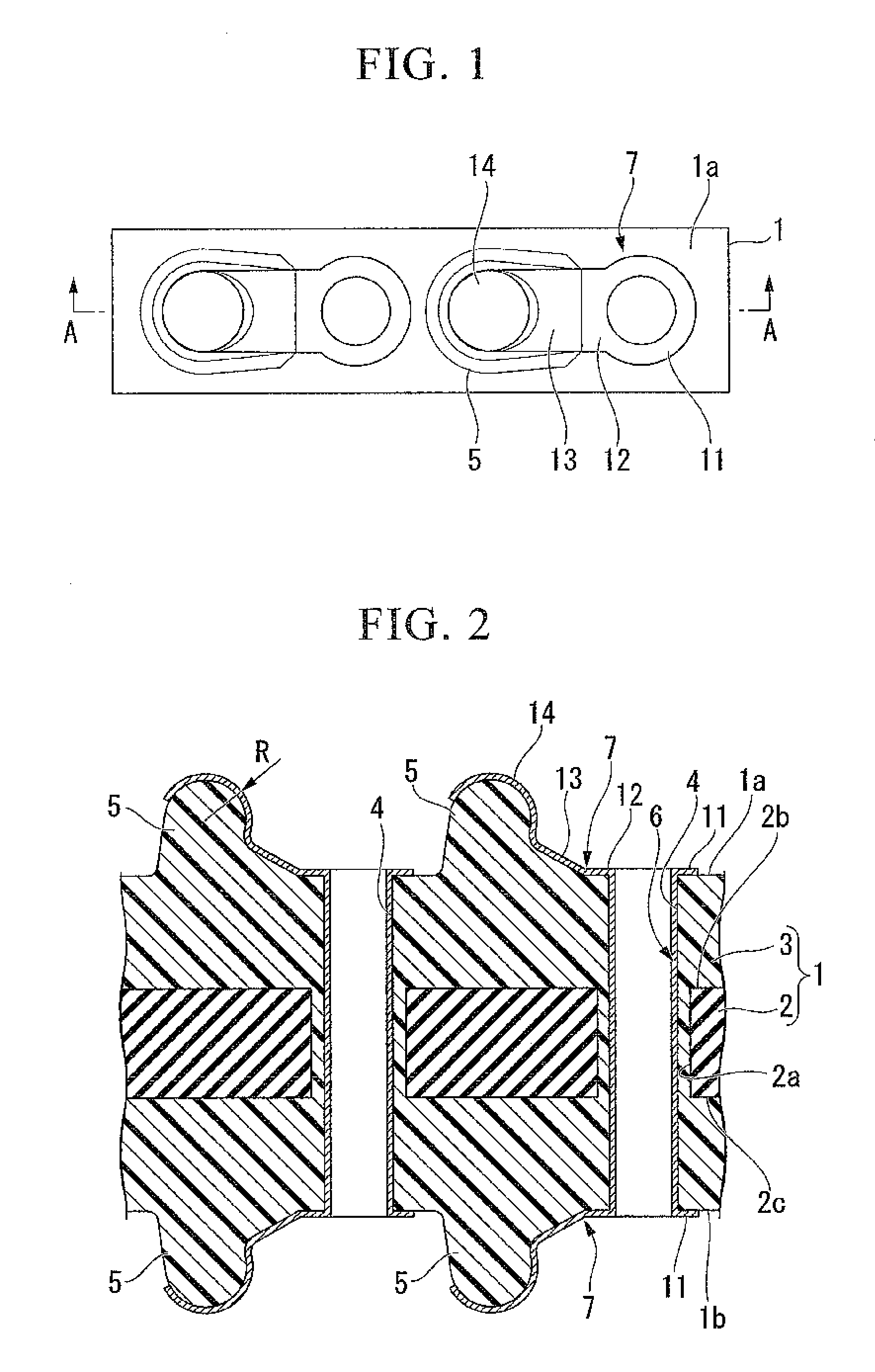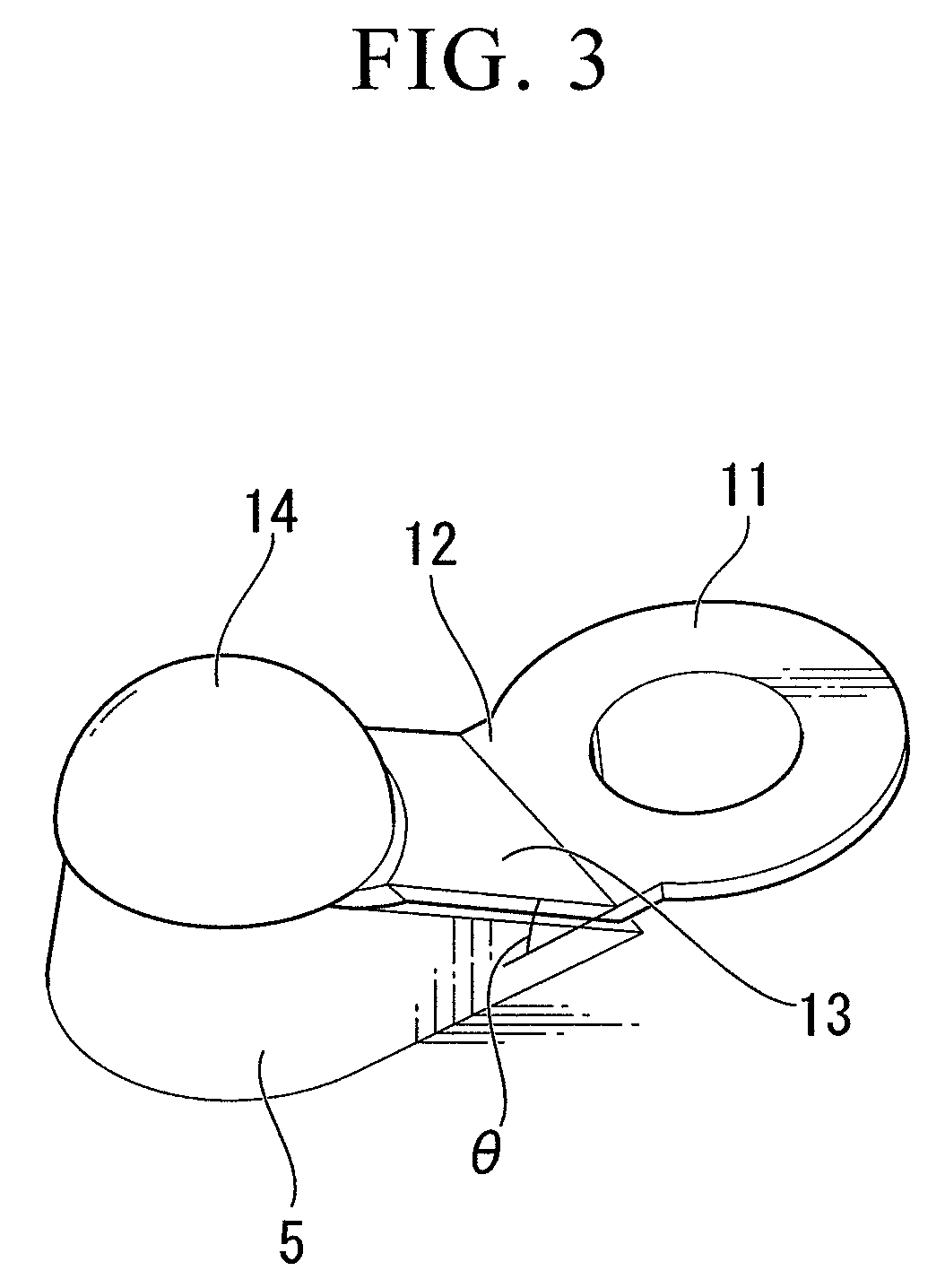Double-sided connector with protrusions
a double-sided connector and protruding technology, applied in the direction of connection contact material, semiconductor/solid-state device details, coupling device connection, etc., can solve the problems of inability to meet predetermined load, inability to realize finer pitches, and complex manufacturing processes. , to achieve the effect of efficient arrangemen
- Summary
- Abstract
- Description
- Claims
- Application Information
AI Technical Summary
Benefits of technology
Problems solved by technology
Method used
Image
Examples
first embodiment
[0049]FIG. 1 is a plan view of a double-sided connector according to a first embodiment of the present invention, and FIG. 2 is a cross-sectional view taken along the line A-A of FIG. 1.
[0050]In these FIGS. 1 and 2, reference numeral 1 represents an insulating member. The insulating member 1 is composed of: an insulating substrate (an insulating material) 2 which has holes 2a which are formed in advance at the positions where through holes 4 are to be formed; and a film or sheet elastomer 3 which is insert-molded with the insulating substrate 2 so as to cover all of a top face 2b, a bottom face 2c, and the holes 2a of the insulating substrate 2, and which has a predetermined thickness.
[0051]A plurality of the through-holes 4 (two of them are shown in FIGS. 1 and 2) is formed in the insulating member 1, and penetrates the insulating member in its thickness direction. On a top face 1a and a bottom face 1b of the insulating member 1, approximately hemispherical protrusions 5 made of el...
second embodiment
[0086]FIG. 6 is a plan view of a double-sided connector according to a second embodiment of the present invention.
[0087]The double-sided connector of the present embodiment differs from that of the first embodiment in that the through-holes 4 are arranged in a matrix of four rows and four columns on one face of the insulating member 1 at an inter-terminal pitch P. In addition, each of the contact terminal parts 7 is formed at the corresponding conductive part 6 covering the through-hole 4 and, instead of connecting adjacent contact terminal parts 7, they are formed so as to be independent from each other. When the above-mentioned one face of the insulating member 1 is seen in front view, the angle ø between the extending direction of the contact terminal parts 7 and a side 1c of the insulating member 1 is 45 degrees.
[0088]The inter-terminal pitch P is, for example, 1 mm. In this case, approximately 0.5 mm can be used for the width of the contact terminal part 7, and thus 0.25 mm can...
third embodiment
[0092]FIG. 7 is a plan view of a double-sided connector according to a third embodiment of the present invention. FIG. 8 is a cross-sectional view taken along the line B-B of FIG. 7.
[0093]The double-sided connector of the present embodiment differs from that of the first embodiment in that: a terminal part 31 which is electrically connected to the conductive part 6 is formed near the opening end part of the each through-hole 4 on the bottom face 1b of the insulating member 1; and a soldered part 32 is formed on the each of terminal part 31.
[0094]As shown in this construction where the soldered parts 32 are formed on the bottom face 1b of the insulating member 1, the double-sided connector of the present embodiment can be applied not only for the construction where both of the top face 1a or the bottom face 1b have the point of contact structures, but also for the construction where one of the top face 1a or the bottom face 1b has solder-mounting structure.
PUM
 Login to View More
Login to View More Abstract
Description
Claims
Application Information
 Login to View More
Login to View More - R&D
- Intellectual Property
- Life Sciences
- Materials
- Tech Scout
- Unparalleled Data Quality
- Higher Quality Content
- 60% Fewer Hallucinations
Browse by: Latest US Patents, China's latest patents, Technical Efficacy Thesaurus, Application Domain, Technology Topic, Popular Technical Reports.
© 2025 PatSnap. All rights reserved.Legal|Privacy policy|Modern Slavery Act Transparency Statement|Sitemap|About US| Contact US: help@patsnap.com



